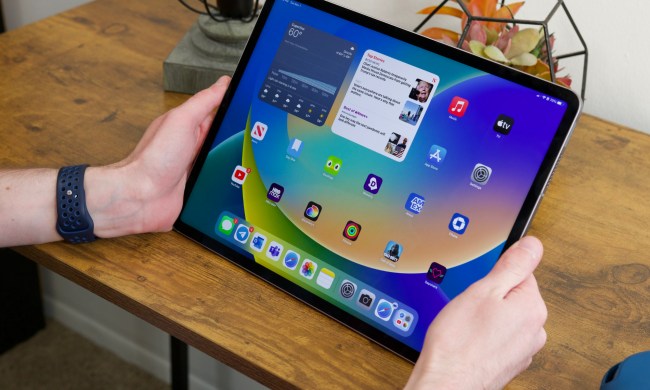The end of the calendar year is often when we reflect on all the big announcements, new product launches, and huge advancements in the home technology sphere. While there have been a few notable concepts, gadgets, and ideas that will make 2021 memorable, the year might be notable more for all the stuff we didn’t get.
Cool smart home technology
When it comes to progress in 2021, there were a handful of notable advancements. One of the most tangible and useful is artificial intelligence (A.I.) in the home, and we saw it in products like iRobot’s new Roomba j7+ vacuum robot.

Artificial intelligence for the home
iRobot rolled out a host of object recognition features that make its robot vacuum more useful since now it won’t get caught on things as much. A new camera built into Roomba j7 can ‘see’ and avoid specific objects like cords, cables, and socks, and even pet poop, so there’s no more coming home to unpleasant surprises or half-finished cleanings. iRobot (and to be honest, other robot vacuum and mop manufacturers are also doing this too) has been training its bots to be smarter and more adaptable to us humans in the home, since we can be forgetful and careless when it comes to leaving hazards in the way of a fresh floor sweep.
Biometrics everywhere
If it wasn’t A.I. infiltrating our smart homes, it was biometrics. We saw smart fingerprint-enabled padlocks and bike locks become more common, like those from BenjiLock. The beauty of using a fingerprint is that you never need to worry about remembering keys. Unlike PINs or combinations, you can’t forget your fingerprint. Biometric access is also used on many smart door locks including those made by Ultraloq and Eufy and the convenience can’t be understated. We covered the best of them all in our best smart lock roundup.
Biometrics popped up in apps too, in an easier-to-access format. Some products like the Trova line of safes let you unlock them remotely using the biometrics features built into your smartphone. So while these safes don’t employ their own fingerprint readers or iris scanners, they do mean you get a higher level of security. You can stash jewelry, cash, or … well, your stash, and keep it out of the hands of children.
Anxiety-reducing technology and gadgets
Maybe it’s just the pandemic coloring viewpoints, but another major smart home trend in 2021 seems to be anxiety reduction. We’ve seen special Stress Management scoring in the newest Fitbits including the Fitbit Luxe and Fitbit Charge 5 released this year. A host of apps can also help you meditate or otherwise zone out and take your mind off things.

The rise of sleep tech
Where anxiety creates sleep trouble there’s also new technology at play. A variety of gadgets promise to help you drift off by focusing on pulsing lights (Dodow Sleep Aid) or by dialing in a bedtime ritual on the refreshingly low-tech Morphée sleep aid.
There are also several options for smart simulated sunlight-enabled alarm clocks that can help you adjust your circadian rhythms by dimming to mimic a sunset (to trigger your natural sleep response), and wake you with gentle light instead of jarring jangling. Philips SmartSleep clock is just one option. Google’s new Nest Hub dropped in 2021 with special sleep sensing abilities too. I had a chance to get hands-on with one, but in my opinion, those sleep smarts were lacking in the early days. My Nest Hub seemed to be tracking my pillow more than my own movements during my review period and registered me as sleeping for about 24 hours on more than one occasion, but I’m happy to report things seem to have improved in the subsequent months. (That’s also one of the great things about the Google Home ecosystem, by the way — it’s constantly improving.)
Wi-Fi 6 for better smart home connectivity
Finally, on the advancement front, we did see the slow rise of Wi-Fi 6. This newer and more powerful Wi-Fi standard wasn’t launched in 2021 exactly, but more manufacturers started making gadgets that are Wi-Fi 6-enabled, and that number will only continue to grow next year. Wi-Fi 6 should (once you add a Wi-Fi 6 compatible router to your home and start upgrading to new smart home gadgets that are also Wi-Fi 6 enabled) allow for better communication between devices. Expect to see more about Wi-Fi 6 in 2022 and 2023.
Did we advance the smart home in 2021?
With all that said, it might look like smart home technology made some pretty decent leaps in 2021, but in my opinion, the overall state of smart homes is kind of static. We didn’t see any huge leaps in technology, no truly revolutionary products that instantly became must-haves, and very few upgrades to existing devices that would have put them on everyone’s wish lists.

Putting on my professor mortarboard: these days, what would that innovation look like? I remember back in the day carrying a Palm Pilot, a flip phone, and my quick-snap camera and wishing, truly wishing, that someone would combine all those devices into one magical device. The launch in 2007 of the first iPhone was one of the first times I can remember being wowed by the power of technology. But where is that next great technology threshold?



